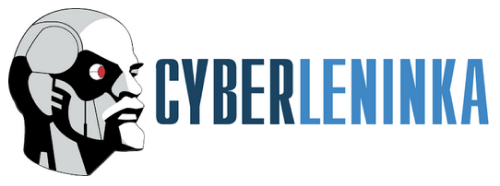SET OF DEVICES FOR MEASURE MATERIALS PHYSICALS AND MECHANICAL PROPERTIES AT MICRO- AND NANOSCALE DEVELOPMENT AND MANUFACTURE
( Pp. 42-45)
More about authors
Tyurin Aleksandr Ivanovich
kand. fiz.-mat. nauk, zam. direktora po NIR
scientific education center «Nanotechnology and nanomaterials»; Tambov State University named after G.R. Derzhavin Vorobyov Maksim O. veduschiy specialist
LLC “Nanodiagnostika”; Tambov State University named after G. R. Derzhavin Pirozhkova Tatyana Sergeevna aspirantka
scientific education center «Nanotechnology and nanomaterials», Tambov State University named after G.R. Derzhavin
scientific education center «Nanotechnology and nanomaterials»; Tambov State University named after G.R. Derzhavin Vorobyov Maksim O. veduschiy specialist
LLC “Nanodiagnostika”; Tambov State University named after G. R. Derzhavin Pirozhkova Tatyana Sergeevna aspirantka
scientific education center «Nanotechnology and nanomaterials», Tambov State University named after G.R. Derzhavin
Abstract:
Studies of the properties of solid materials by means of indentation known since ancient times. Today, with the development of nanotechnology, advanced materials science and nanomaterials in all spheres of human activity are increasingly used new materials, including nano-structured, with improved physical and mechanical properties. For the analysis and validation of the strength properties of the material without destroying the entire sample has recently become increasingly important instruments for determining local physical and mechanical properties in the micro- and nanoscale. These devices are micro and nanoindentation instruments, nanoeducators, skretchtesters different brands and manufacturing companies. However, despite the large number of existing equipment to study the properties of materials at the micro- and nanocontacts still no universal equipment capable of working not only in the scientific and technical sphere, but also in the production of the equipment as qualifying for the study of physical and mechanical properties of materials in micro- and nano-scale with a resolution of 1 nm, a maximum load of up to 10 N, and a wide range of speeds relative strain from 10-2 to 105 s-1. This will use the device as a modeling material behavior under conditions of high strain rates and high local loadings. The work focused on the set of universal micro and nanoindentation instruments working with a resolution of the displacement of the indenter from 1 to 5 nm, the maximum value of the applied load from 1 to 10 N, and a wide range of speeds relative deformation from 10-2 to 105 s-1 are development and manufacture. Developed devices will differ from existing domestic and foreign counterparts under the high cost, ease of use, universal set of specifications. As a result, the domestic market will be new equipment with a universal set of options that will take its place as a research and certification of equipment in various high-tech enterprises and can act as an import-substituting equipment market segment. Also, due to the presence of methodological support, comparatively high cost and ease of use of this equipment can be used as teaching and laboratory to practice work in physics, materials science and physical nanophase materials science, special physical works in high schools, specialized schools, colleges, technical schools, which significantly extends the scope of applicability of the developed instrument
How to Cite:
Tyurin A.I., Vorobyov M.O., Pirozhkova T.S., (2015), SET OF DEVICES FOR MEASURE MATERIALS PHYSICALS AND MECHANICAL PROPERTIES AT MICRO- AND NANOSCALE DEVELOPMENT AND MANUFACTURE. Computational Nanotechnology, 2 => 42-45.
Reference list:
Bhushan B. Springer Handbook of Nanotechnology. Berlin: Springer, 2010. 1968 p.
Fischer-Cripps A. C. Nanoindentation. NewYork: Springer. 2011. 280 p.
Golovin YU. I. Nanoindentirovanie i ego vozmozhnosti // M.: Mashinostroenie. 2009. 312 s.
Golovin YU.I. Vvedenie v nanotekhniku. M.: Mashinostroenie. 2008. 496s.
Golovin YU.I., Tyurin A.I., Ivolgin V.I. // ZHTF. 2000. T. 70. № 5. s.82-91.
Golovin YU.I., SHibkov A.A., Boyarskaya YU.S., Kats M.S., Tyurin A.I. // FTT. 1988. № 11. S. 3491-3494.
Golovin YU.I., Tyurin A.I. // Materialovedenie. 2001. № 1. S. 14-24.
Golovin YU.I., Ivolgin V.I., Korenkov V.V., Tyurin A.I. // Pis ma v ZHTF. 1997. T. 23. № 16. S. 15-19.
Golovin YU.I., Ivolgin V.I., Tyurin A.I., KHonik V.A. // FTT. 2003. T. 45. № 7. S. 1209-1212.
Golovin YU.I., Tyurin A.I. // Izvestiya RAN. Seriya fizicheskaya. 1995. T. 59. № 10. S. 49-54.
Surmeneva M. A., Surmenev R. A., Tyurin A. I., Mukhametkaliyev T. M., Teresov A. D., Koval N. N., Pirozhkova T. S., Shuvarin I.A., Oehr C. // Thin Solid Films. 2014. T. 571. S. 218-223.
Tjurin A.I., Shuvarin I.A., Pirozhkova T.S. // Italian Science Review. 2014. T. 1. № 10. S. 189-193.
Oliver W.C., Pharr G.M. // J. Mater.Res. 1992. V. 7. № 6. P. 1564-1583.
Fischer-Cripps A. C. Nanoindentation. NewYork: Springer. 2011. 280 p.
Golovin YU. I. Nanoindentirovanie i ego vozmozhnosti // M.: Mashinostroenie. 2009. 312 s.
Golovin YU.I. Vvedenie v nanotekhniku. M.: Mashinostroenie. 2008. 496s.
Golovin YU.I., Tyurin A.I., Ivolgin V.I. // ZHTF. 2000. T. 70. № 5. s.82-91.
Golovin YU.I., SHibkov A.A., Boyarskaya YU.S., Kats M.S., Tyurin A.I. // FTT. 1988. № 11. S. 3491-3494.
Golovin YU.I., Tyurin A.I. // Materialovedenie. 2001. № 1. S. 14-24.
Golovin YU.I., Ivolgin V.I., Korenkov V.V., Tyurin A.I. // Pis ma v ZHTF. 1997. T. 23. № 16. S. 15-19.
Golovin YU.I., Ivolgin V.I., Tyurin A.I., KHonik V.A. // FTT. 2003. T. 45. № 7. S. 1209-1212.
Golovin YU.I., Tyurin A.I. // Izvestiya RAN. Seriya fizicheskaya. 1995. T. 59. № 10. S. 49-54.
Surmeneva M. A., Surmenev R. A., Tyurin A. I., Mukhametkaliyev T. M., Teresov A. D., Koval N. N., Pirozhkova T. S., Shuvarin I.A., Oehr C. // Thin Solid Films. 2014. T. 571. S. 218-223.
Tjurin A.I., Shuvarin I.A., Pirozhkova T.S. // Italian Science Review. 2014. T. 1. № 10. S. 189-193.
Oliver W.C., Pharr G.M. // J. Mater.Res. 1992. V. 7. № 6. P. 1564-1583.
Keywords:
nanoindentation, properties of materials in nanoscale, nanoindenter.
Related Articles

4. NANOSTRUCTURED MATERIALS Pages: 64-68 Issue №5869
Development and production of the prototype hardware for wear-resistant nanostructured ceramics of grinding bodies of small size
ceramics
nanoindentation
friction in nanoscale
Show more










